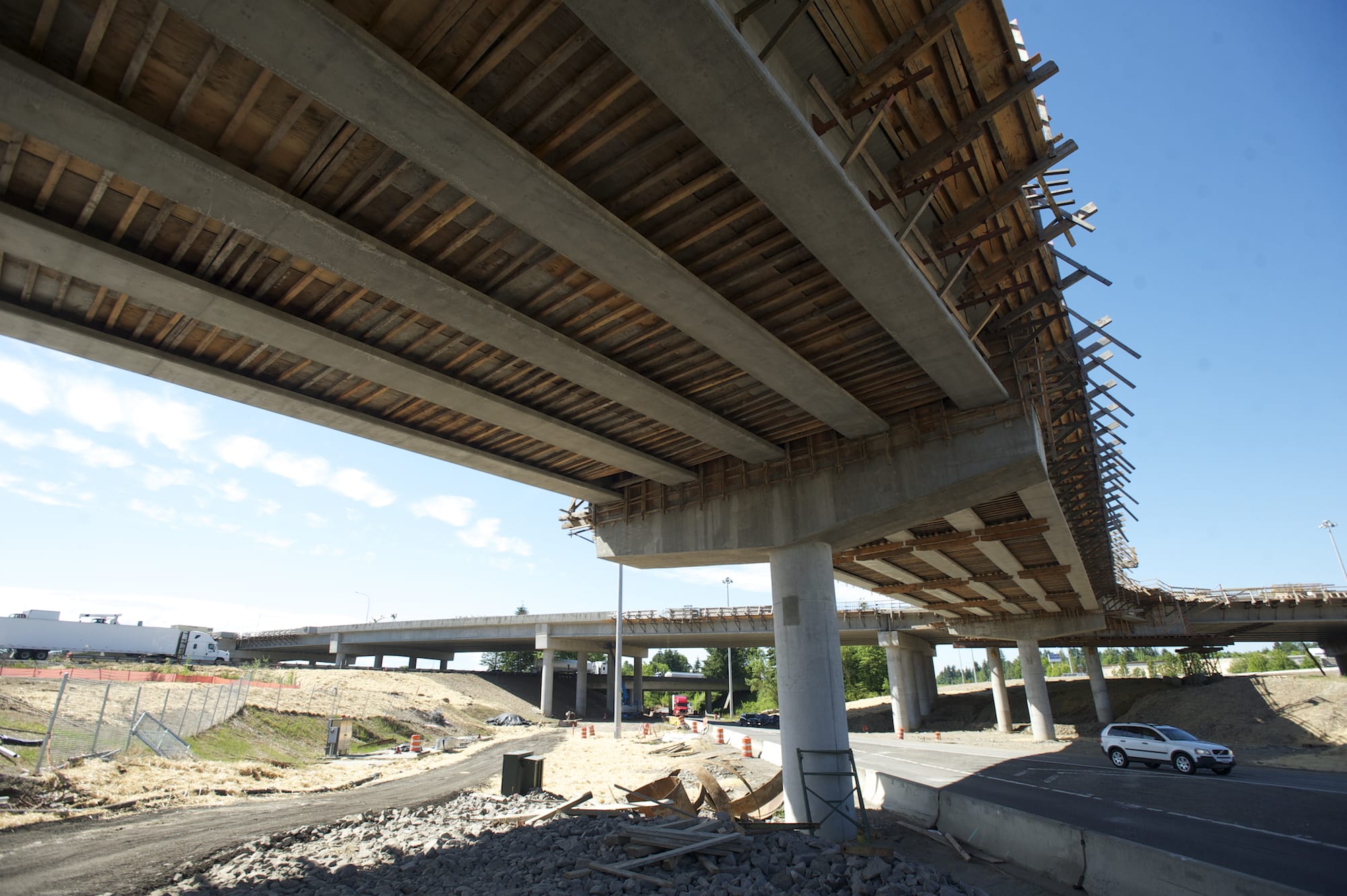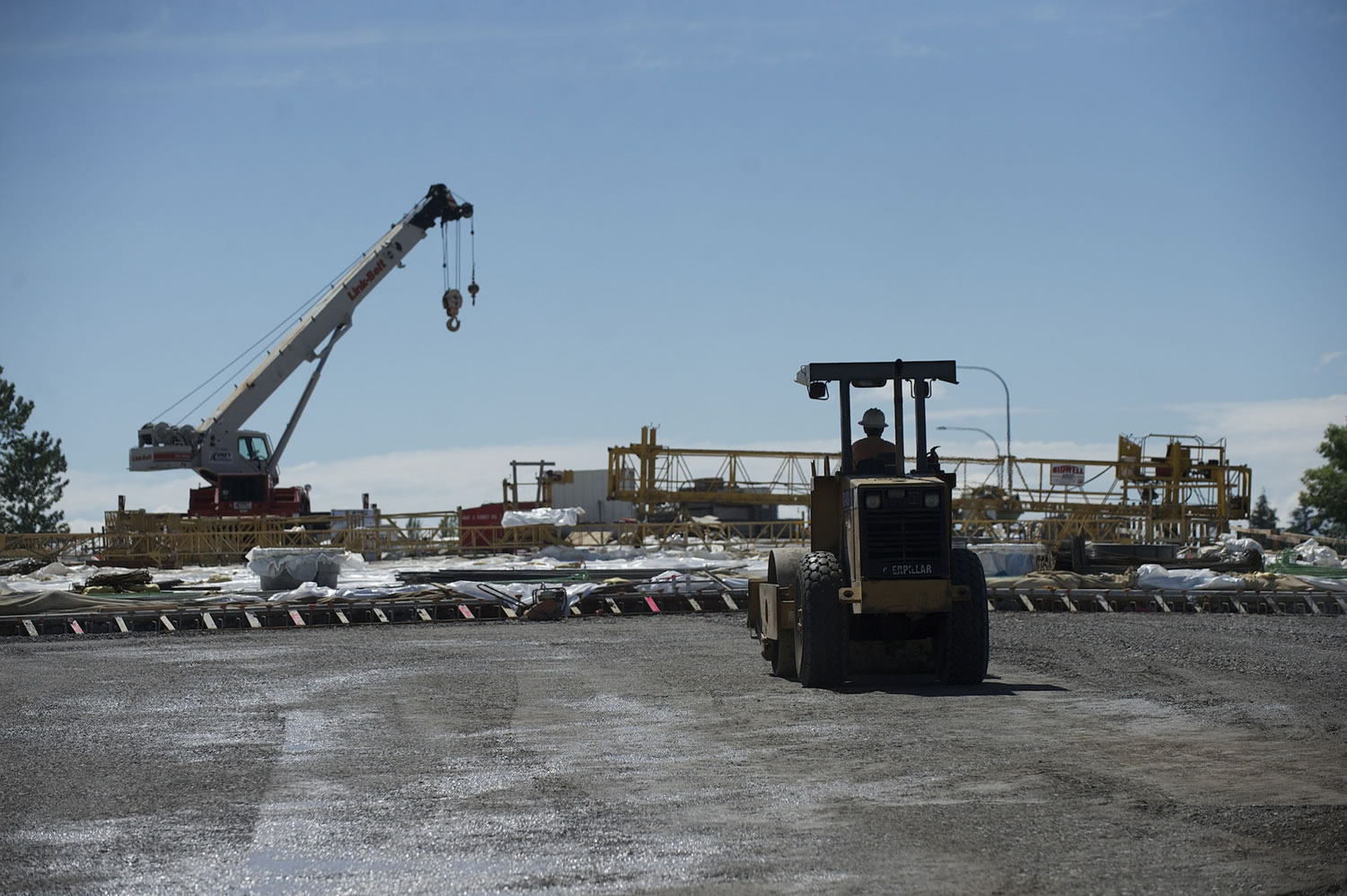When the Washington State Department of Transportation decided to tackle a problem spot on one of Vancouver’s freeway interchanges last year, planners thought small.
The junction at northbound Interstate 205 and state Highway 500 had been seeing regular backups at peak travel times. But WSDOT didn’t try to rebuild it. Crews restriped it, shifting the orientation of through lanes and merge points. Once people got used to it, conditions improved.
The fix cost about $100,000, said WSDOT regional administrator Don Wagner.
“Nobody can come out and cut a ribbon on this one,” Wagner said. “It’s not a big, glorious project that gets a lot of headlines.”
The project reflects a small-ball approach that regional transportation officials are emphasizing more with shaky funding prospects at both the federal and state levels. And Wagner said the strategy can produce good results in the absence of big-ticket projects that have changed the transportation landscape in Clark County and elsewhere in recent years.
“You can build a bigger highway for a lot more money. But you really only need it for a few hours (a day),” Wagner said. “So if you can manage your way through this, you can save a lot of money and get more people through.”
“That’s really the crux of where we’re trying to move right now,” he said.
The shift means the recent highway building boom in Clark County will come to an end, at least in the near term. The $133 million Salmon Creek Interchange Project is scheduled to wrap up this fall. Another large project set to begin construction later this year, a new interchange at I-205 and Northeast 18th Street, is the last project in the county paid for by state gas tax increases approved in 2003 and 2005.
Attempts to pass a new transportation revenue package — built largely on another gas tax hike — have struck out in the Washington Legislature two years in a row. Federal prospects are even dimmer: The highway account of the Highway Trust fund is projected to run out of money by the end of this summer, according to the U.S. Department of Transportation.
The shortfall could delay or temporarily shelve dozens of federally funded projects in Washington, said WSDOT spokesman Lars Erickson. Among those is a planned paving project on Interstate 5 in Clark County.
Erickson noted the Highway Trust Fund has approached insolvency before, and lawmakers have always come through.
“We are cautiously optimistic that Congress will take action,” Erickson said.
At the local level, most maintenance projects rely on local money and are unaffected by federal funding sources, said Bill Whitcomb, an asset manager in the city of Vancouver’s public works department. City projects that use federal grants tend to be larger capital improvements, he said. The city is currently acquiring right of way for an expansion of Northeast 18th Street between Four Seasons Lane and Northeast 138th Avenue, for example.
Despite federal uncertainties, the city hasn’t changed its strategy for improving and maintaining its transportation system, Whitcomb said.
“We’re really looking at highlighting preservation projects so that we work hard to keep good roads in good condition,” Whitcomb said.
Stretching dollars
Even if WSDOT were to see an influx of new funding — perhaps in the form of a state transportation package — planners would still seek the smaller fixes that do more with less, Wagner said.
Part of the reason is that much of the regional highway system is already built out, he said. Once the Salmon Creek project wraps up, for example, the I-5 corridor through Southwest Washington won’t see any more major changes for the foreseeable future, Wagner said.
On I-205, regional transportation officials have already started eyeing some of the smaller fixes that could add years of operation without adding pavement. Some of those conversations will happen with the Southwest Washington Regional Transportation Council in the coming months.
Expansion isn’t always the best option if it doesn’t address the right problem, said Bart Gernhart, an assistant regional administrator at WSDOT. He used the analogy of replacing a garden hose with a fire hose.
“If your nozzle is still a garden nozzle, you can make that hose as big as you want and it’s not going to get more people (through),” Gernhart said.
That’s not to say there aren’t still significant trouble spots on Clark County’s transportation grid. Highway 500’s signalized intersections at Northeast 42nd and 54th avenues continue to cause problems, Wagner said. Highway 14 will also likely need retooling east of Interstate 205, he added.
The difference, Gernhart said, is finding more targeted, less costly ways to address those problems without extra add-ons. That’s one of the things many reform-minded state lawmakers called for as a condition for any new transportation revenue.
“People also want us to stretch the dollars as far as we can before they’re looking at new taxes,” Gernhart said. “That’s what we’re trying to do.”





